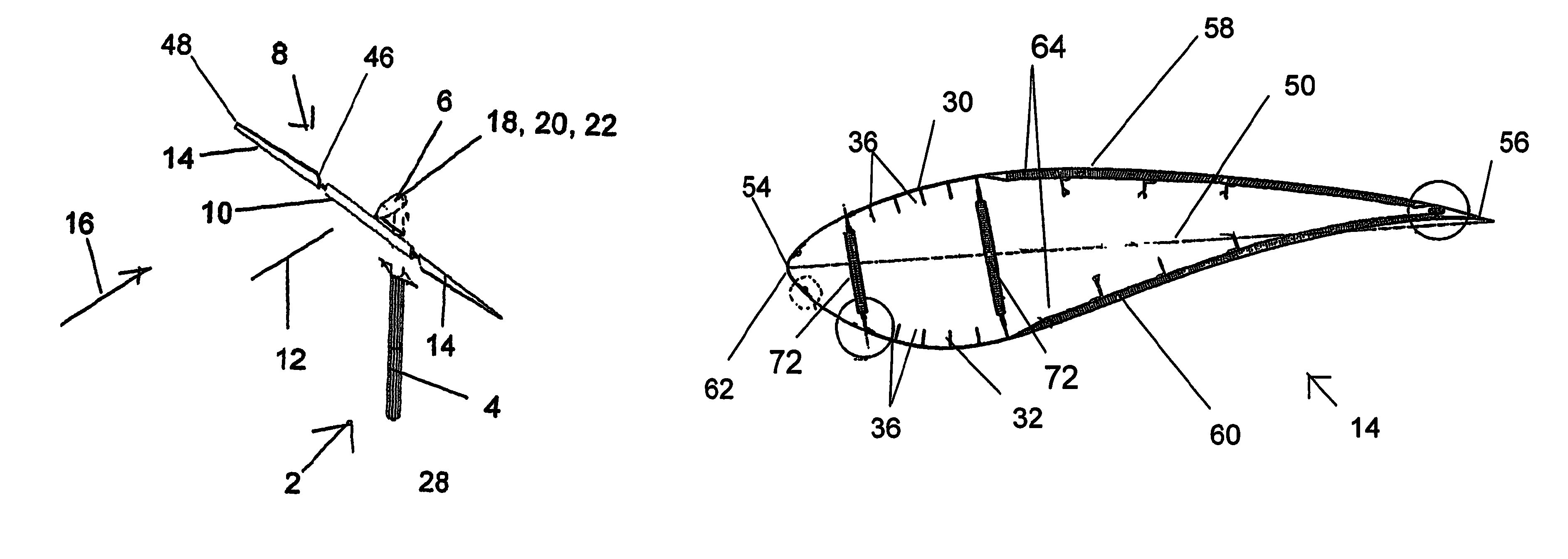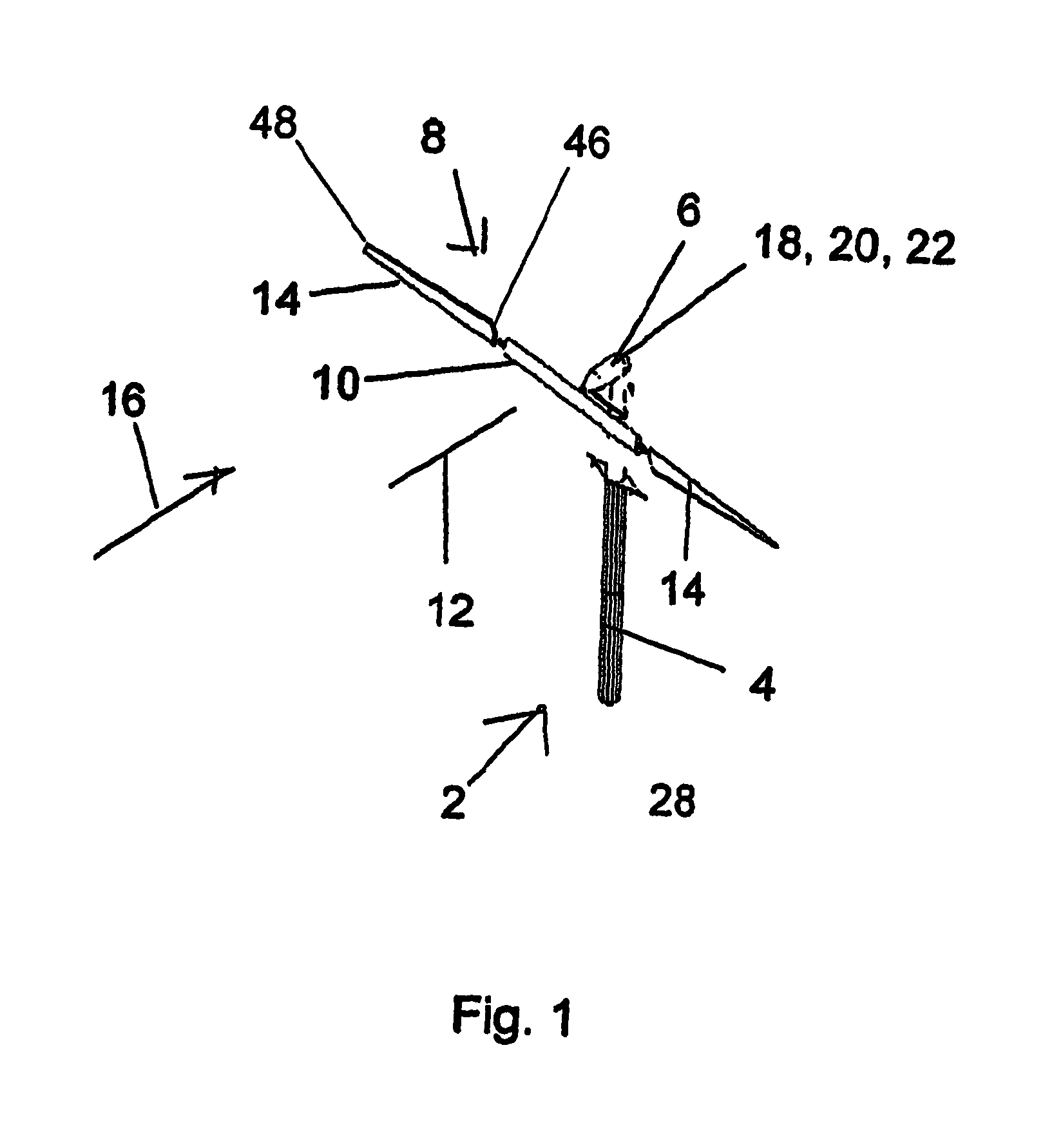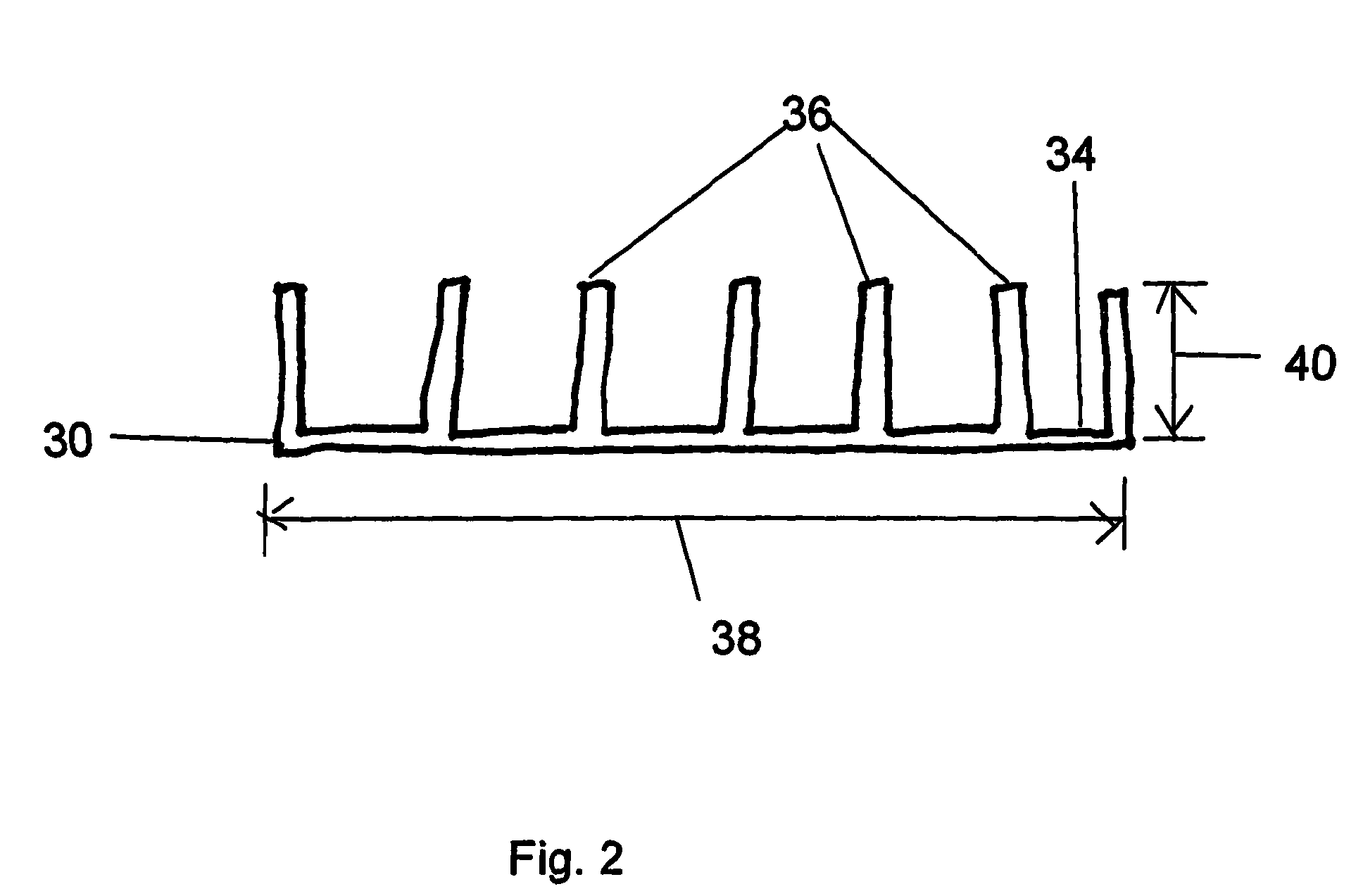Highly reliable, low cost wind turbine rotor blade
a high-reliability, low-cost technology, applied in the direction of electric generator control, vessel construction, marine propulsion, etc., can solve the problems of low production efficiency, inconvenient high-volume blade manufacturing, and failure of current-technology wind turbine rotor blades, so as to reduce the width of the spar pultrusion base and improve bonding
- Summary
- Abstract
- Description
- Claims
- Application Information
AI Technical Summary
Benefits of technology
Problems solved by technology
Method used
Image
Examples
Embodiment Construction
[0051]As shown by FIG. 1, the wind turbine 2 of the Invention features a tower 4 and a nacelle 6 supported by the tower 4. The nacelle supports a rotor 8. The rotor 8 comprises a hub beam 10 that rotates about an axis or rotation 12. The rotor 8 also includes two rotor blades 14 attached to opposing ends of the hub beam 10. The rotor blades 14 are in the shape of an airfoil and rotate about axis of rotation 12 in response to wind 16 flowing past the rotor blades 14. The nacelle 6 contains a low speed shaft 18 that is turned by the rotating rotor 8, a speed increaser 20 that is turned by the low speed shaft 18, and an electrical generator 22 that is turned by the speed increaser 20. Electrical generator 22 has an output that feeds electricity to an electrical load 24. The electrical generator 22 can be connected to an electrical power distribution grid 26 and the electrical load 24 can be a load 24 on the distribution grid 26. Tower 4 supports nacelle 6 above ground 28.
[0052]FIGS. 2 ...
PUM
| Property | Measurement | Unit |
|---|---|---|
| diameter | aaaaa | aaaaa |
| length | aaaaa | aaaaa |
| speed | aaaaa | aaaaa |
Abstract
Description
Claims
Application Information
 Login to View More
Login to View More - R&D
- Intellectual Property
- Life Sciences
- Materials
- Tech Scout
- Unparalleled Data Quality
- Higher Quality Content
- 60% Fewer Hallucinations
Browse by: Latest US Patents, China's latest patents, Technical Efficacy Thesaurus, Application Domain, Technology Topic, Popular Technical Reports.
© 2025 PatSnap. All rights reserved.Legal|Privacy policy|Modern Slavery Act Transparency Statement|Sitemap|About US| Contact US: help@patsnap.com



